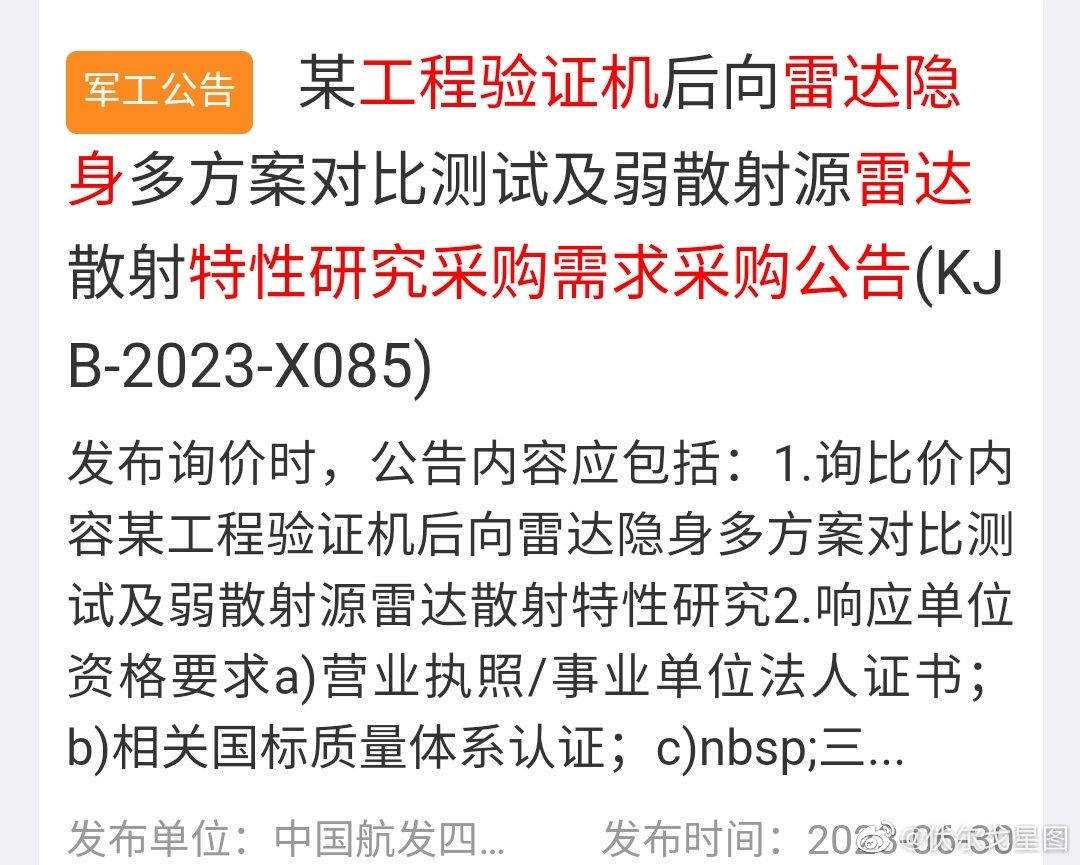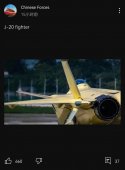2 hours is plenty of time for other people to save and reupload it, come on bro I believe in you.There was a landing video yesterday for existing about 2 hours before taken down and it had a much clearer view on the engine, sadly it disappeared at the moment I was trying to download it.
You are using an out of date browser. It may not display this or other websites correctly.
You should upgrade or use an alternative browser.
You should upgrade or use an alternative browser.
J-20 5th Generation Fighter VII
- Thread starter siegecrossbow
- Start date
- Status
- Not open for further replies.
Ah the days when 军迷 were desperately naive and naively desperate.There is also the meme of “J-8 lancing F-22” utilizing high altitude, high speed advantage during the pit of despair era of PLA watchers.
it seems unlikely that we will ever really know with a reasonable degree of certaintyWell, yes every design is a balance aka a compromise to aim to fill the requirements to the best of one's capability.
But you seem to be speaking of both WS-15 and J-20A as if we somehow know what its actual performance is (such as range, top speed), which is certainly not the case. We cannot talk about how reasonable the final balance/compromise of the aircraft is without actually knowing the absolute numbers.
This is J-20 with WS-10C.View attachment 115252
Saw this picture of what appears to be the J20A in Youtube. Looks like they did some patching to the airframe to fit the new engine. Does this suggest a higher by-pass ratio than WS-10C? Can anyone confirm this picture?
That looks like the original J-20 airframe.View attachment 115252
Saw this picture of what appears to be the J20A in Youtube. Looks like they did some patching to the airframe to fit the new engine. Does this suggest a higher by-pass ratio than WS-10C? Can anyone confirm this picture?
View attachment 115252
Saw this picture of what appears to be the J20 with a WS-15 in Youtube. Looks like they did some patching to the airframe to fit the new engine. Does this suggest a higher by-pass ratio than WS-10C? Can anyone confirm this picture?
Even ignoring that the appearance of the engine is a WS-10 and the rear of the canopy looks like a standard J-20 (not new J-20A), nothing in the post even claims that it's WS-15, the caption only reads "J-20 fighter".
What made you think it was WS-15?
Ah ok my bad. Thought the cockpit looked like the old model.
That looks like the original J-20 airframe.
Higher bypass ratio means larger frontal area of the engine and increased drag. Which makes it harder to have good kinematic performance in the aircraft. But it also means higher thrust with less fuel consumption. Like I said, as long as the bypass ratio is not obscenely large it can be mitigated to a degree with proper airframe design, the Saab Viggen had a bypass ratio close to 1, and it had a top speed over Mach 2.
If it is indeed a document from the 624 Research Institute, it should be related to WS-19.A procurement document that was posted today. It announces an open bid for a comparative radar signature test to be carried out on the rear aspect of a certain technology demonstrator (某工程验证机后向雷达隐身多方案对比测试及弱散射源雷达散射特性研究采购需求采购公告). If I'm reading this correctly, the bid implies that there are multiple competing designs, which necessitates a comparative test to find the design with the best radar signature reduction performance. Unfortunately, the screenshot partially obscures the name of the entity that submitted the bid; it only says "中国航发四", which could be AECC Sichuan Gas Turbine Research Institute/624 Institute (中国航发四川燃气涡轮研究院) or AECC Factory 402 (中国航发四二〇厂) or some other entity.
If indeed the document was submitted by the 624 Institute, then this could be for testing a new engine nozzle. WS-15 with a 2D and/or 3D TVC nozzle perhaps? If this bid has nothing to do with engines, then this could be about anything from H-20's rear fuselage design to J-20A's rear fuselage design.

The statement of a certain engineering verification machine is also in line with what Chief Engineer Huang Weina said this year that WS-19 is in the stage of engineering verification machine.
ws-15 is a product based on 606. And in terms of time, it seems too late to carry out the radar test of the engineering verification machine now.
- Status
- Not open for further replies.

